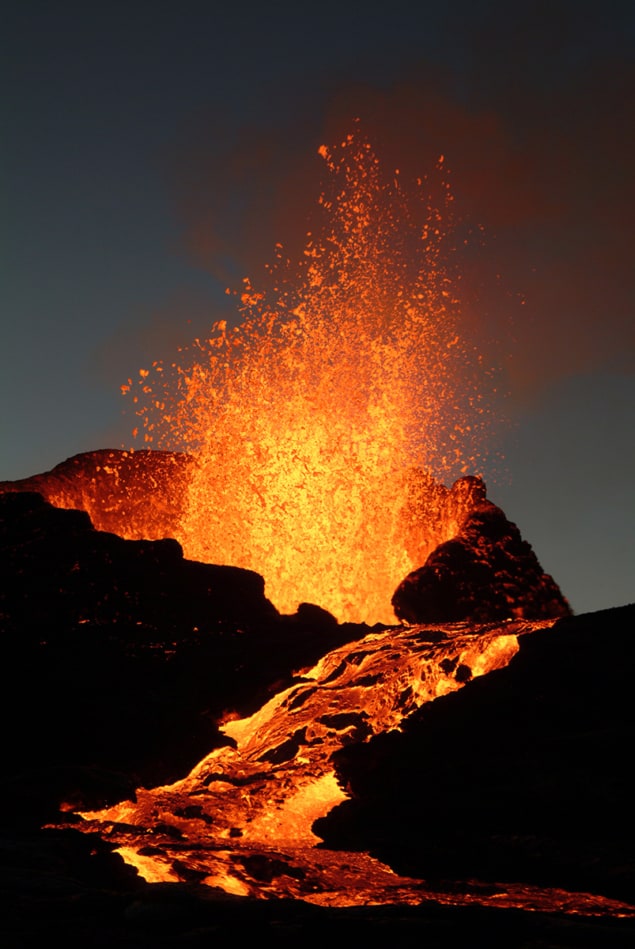David Appell reviews Dangerous Earth: What We Wish We Knew about Volcanoes, Hurricanes, Climate Change, Earthquakes, and More by Ellen Prager

“Comfort’s in Heaven, and we are on the Earth,” says the Duke of York in William Shakespeare’s Richard II, a dire bit of philosophy that many writers have touched upon. Ellen Prager, marine scientist, writer and science adviser to Celebrity Cruises in the Galapagos, gives her own take on the subject in her latest book Dangerous Earth: What We Wish We Knew about Volcanoes, Hurricanes, Climate Change, Earthquakes, and More. It’s a dangerous world out there, she writes, and there is still much about our planet that we do not understand.
Most of us are going to die due to old age, or common causes such as heart disease, stroke and dementia. Every so often, though, it is the Earth itself that poses a significant danger to life and limb. Natural disasters – including earthquakes, tsunamis and hurricanes – garner the world’s attention and can even mark the passage of history: the volcanic eruption of Mount Vesuvius; the 1906 San Francisco earthquake; the Boxing Day tsunami in 2004 that killed almost a quarter of a million people.
Despite their enormous destructive power, these natural phenomena are of significant interest to scientists. They appear possibly predictable but are mostly not; they’re massive in scale, dwarfing the human realm. A mature hurricane can release about 200 times the total electrical generating capacity of civilization, according to NASA. In the open ocean a tsunami wave can travel at more than 800 km/h. Anthropogenic warming is heating the ocean by the energy equivalent of over five Hiroshima bombs a second.
Scientific, policy and rescue communities all over the world learn from each such event, as Prager explains. Yet there is much we do not know. She describes what is known about these various cataclysms, usually with specific examples from recent decades, then covers the “wish-we-knews” – what scientists and others would like to know. Indeed, science still can’t predict when a volcano will erupt, the exact path a hurricane will take, or the value of climate sensitivity (the average amount of surface warming the Earth will experience if carbon-dioxide levels in the atmosphere double). The latter may be one of the most important numbers in human history, and requires much better understanding of, for example, the dynamics of the 15 melting planetary ice sheets, the rate at which permafrost will melt; and how the resulting climate change will affect extreme weather, extreme rainfall, corals and marine life, algae blooms and ocean dead zones.
Prager is a strong writer with an excellent narrative sense. As an Oregonian I know a lot about the 1980 eruption of the Mount St Helens volcano in the Pacific Northwest of the US, and I was captivated by her telling of the story of the 1991 eruption of Mount Pinatubo in the Philippines. Although more than 840 people died from the 15 June eruption in the Philippines’ Luzon Volcanic Arc, the largest in those months and the second-largest of the 20th century, many more were saved by the work of geologists who were closely monitoring the mountain for seismic activity and magma movement. Some of the best work was done educating the local population about past massive eruptions and pushing local officials to make thorough evacuation plans.
Then, Prager writes, pulling the reader steadily along, “a defining moment occurs”. A geologist named Rick Hoblitt accompanies an air force general on an aerial survey of the mountain. Hoblitt points out the current hazards and notes how the imminent pyroclastic flow will lead right into the nearby Clark Air Base. “The general turns to his colonel and orders an evacuation,” and the next day 25,000 people leave; soon a total of 200,000 are evacuated. Within days the main eruption bursts forth and the base is obliterated, but many lives have been saved.
Climate change appropriately features heavily in Prager’s book, being the mother of all disasters now and for the next few centuries. I found the chapter on volcanoes the best in Dangerous Earth, for both science and narration. The last chapter – on rogue waves, landslides, rip currents and sinkholes – is refreshingly novel, but the final subsection on sharks seems shoehorned in, perhaps at the suggestion of the publicity department. The midsection of the book contains an attractive collection of colour photographs and figures. Prager’s paragraph on coral bleaching – about which, for some reason, I’ve always had somewhat of a mental block – is the most succinct, useful explanation I’ve ever come across.
Despite its many positives, the book does have issues. Tornadoes only receive two pages, and then only in the context of hurricanes. In fact, in the US more people are killed annually by tornadoes, on average, than hurricanes. In several places in the book, a presumably asymmetric 3D object is specified by only two numbers.
A more serious problem, in my view, is the lack of an index or even a useful notes section. Each chapter has its own bibliography, but almost no effort was made to link claims, quotations and topics in that chapter with specific sources in the chapter’s bibliography. The reader is left to guess which reference might apply based solely on the paper’s, site’s or book’s title. It makes the book less useful and turns it into something to be read instead of studied. This book deserves more.
- 2020 University of Chicago Press 272pp £20hb



